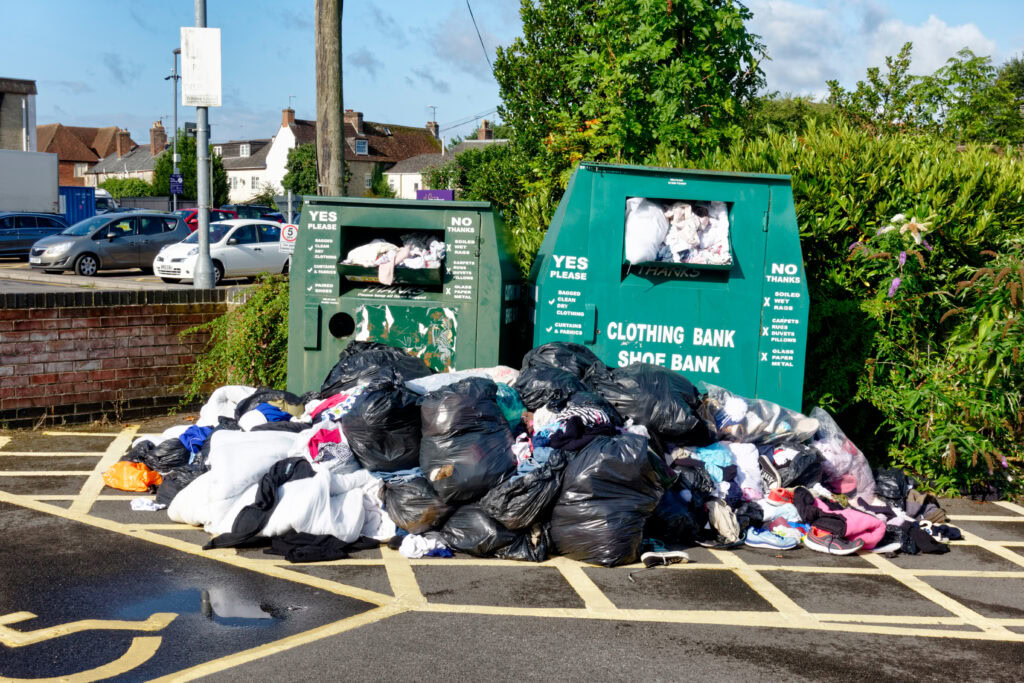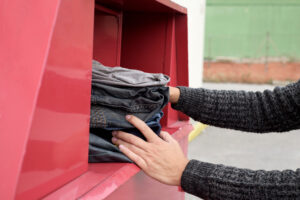UK textile banks and charity shops are experiencing an unprecedented surge in donations, with volumes increasing from twice to nearly four times the normal amount. While this highlights growing awareness around textile waste, it also exposes the deeper issue of fast fashion’s unsustainable cycle.
I have seen a growing number of charity shops with signs in windows stating that they are unable to accept donations, this highlights the growing trend is over consumption and discarding of clothing.
The Salvation Army Trading Company (SATCoL) – who is the largest operators of textile banks in the UK – has confirmed that it has never seen volumes of donations at this level and that it is struggling to make sure it can service the banks regularly in order to reduce any incidents of fly-tipping around its clothing banks.
Fast fashion encourages overconsumption, leading to massive amounts of waste and environmental damage. Consumers are discarding clothing more frequently, charity shops and recycling centres struggle to cope with the influx, often resulting in unsellable items ending up in landfills or being sent for incineration at additional cost to the collectors and processors.
I had a look on Vinted today and the sheer number of items on sale from the fast fashion brands is distressing.
Here is a list of the number of items I found for six brands that we all know:
| Shein | 24.4 million |
| H&M | 65.2 million |
| Zara | 68.4 million |
| Next | 11.7 million |
| New Look | 9.4 million |
| M&S | 4.8 million |
These are just from one resale platform; I shudder at the thought of how many are on the others (yes there will be a certain amount that is listed on multiple platforms).
The resale market for commercial operators of used clothing is at a standstill with no signs of improvement on the horizon.
A capacity issue is inevitable
I have visited a number of warehouses in the last few weeks and have never seen stock levels this high before, despite being in the sector for 18 years.
The issue is not only about textiles, as collectors are also being inundated with large volumes of bric-a-brac and books. They are reporting that only 60% of items being collected are suitable for reuse. The majority of the books are then scanned to check for resale potential, adding to disposal costs due to the time consuming nature of this process.
As consumers, we must rethink our relationship with our throwaway culture. Supporting sustainable brands, buying second-hand, and reducing consumption can all make a difference. But real change requires industry-wide reform, starting with policies like EPR that ensure accountability.
An EPR scheme can transform the fashion industry by ensuring that producers take responsibility for their products throughout their lifecycle. This must involve financial contributions to recycling programs, designing products for durability and recyclability, and reducing waste at the source.
The surge in textile donations is a clear sign that the current system is unsustainable. It’s time for policymakers, brands, charities, retailers, local authorities and consumers to work together to create a circular fashion economy that values quality over quantity and prioritises the planet over profit.








Subscribe for free